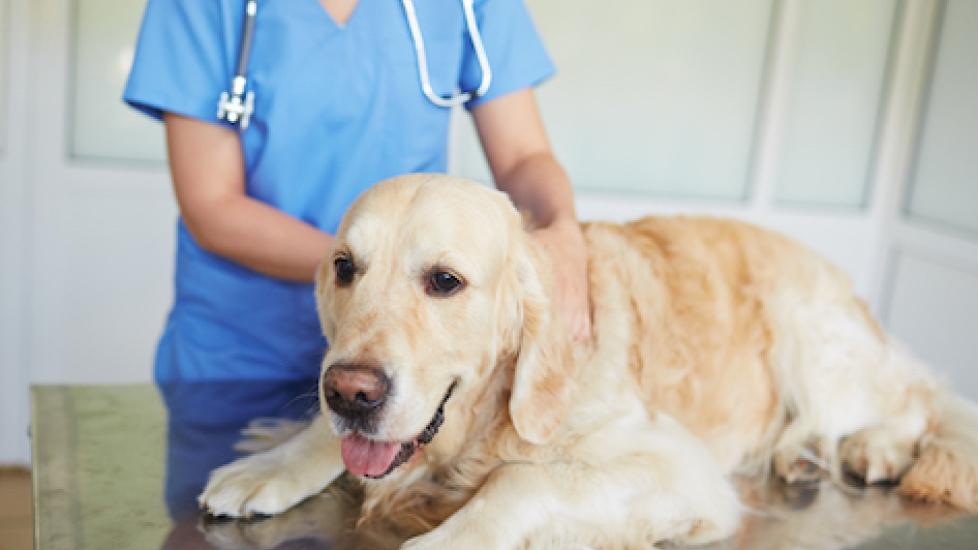10 Reasons Why Your Pet Might Need a Rectal Exam
By Jennifer Coates, DVM
Veterinarians all perform physical examinations in their own way. Some start at the front of the patient and work their way to the back. Others examine each organ system in turn. But however they proceed, veterinarians should, in most cases, end the physical by performing a rectal examination. Why put pets through this unpleasant (for everyone involved) procedure? Rectal examinations are a great way to collect important information and help veterinarians diagnose diseases earlier than they might otherwise. Here, in no particular order, are the top 10 benefits of rectal examinations in pets.
Examine the Feces
Most of the time, it’s possible for a veterinarian to obtain a sample of feces while performing a rectal examination. Fecal examinations are essential for any pet who has gastrointestinal symptoms like vomiting, diarrhea, weight loss, or poor appetite and are also often run during wellness visits to determine if a pet needs to be dewormed.
Feel the Rectal Wall
Veterinarians will run their finger over inner lining of the rectum to determine whether it is thicker, rougher, or drier than usual. These findings can be associated with conditions like inflammatory bowel disease, infections, some types of cancer, or obstruction of the gastrointestinal tract.
Evaluate Anal Tone
Whether or not pets can hold their anus closed in a normal manner depends on the health and functionality of nerves and muscles in the area. Veterinarians will assess a pet’s anal tone (tightness) while performing a rectal examination. Abnormal anal tone is often associated with nerve injuries or diseases.
Examine and Express the Anal Glands
Two anal glands are located one on either side of a pet’s anus. These glands produce a smelly liquid that is usually released when a pet defecates. The anal glands can become distended, infected, or even rupture when their contents aren’t released regularly. The best way to feel a pet’s anal glands and, if necessary, express their contents is with a rectal examination.
Assess the Prostate Gland in Males
Problems with the prostate gland are relatively common in male dogs. Intact males commonly develop an enlarged prostate gland, and neutered male dogs are at higher than average risk for prostatic cancer. A veterinarian can usually feel the prostate gland during a rectal examination as long as the dog is not too big.
Evaluate the Vaginal Tract in Females
Parts of the female reproductive tract can also be assessed during a rectal examination. If any abnormalities are felt, the veterinarian can then perform a vaginal exam or any other tests that are needed to reach a diagnosis.
Feel the Urethra
The urethra is the tube that carries urine from the bladder out of the body. It can become inflamed, infected, or blocked by small stones or other debris that forms within the urinary tract. These abnormalities can sometimes be identified during a rectal examination since part of the urethra runs directly under a pet’s rectum.
Evaluate the Pelvis
Some of the structures that make up a pet’s pelvis (the bony box to which the hind legs, tail, and spine are attached) can be felt during a rectal examination. Determining if these bones are aligned normally is important if a pet has been injured, for example, after falling or being hit by a car. Pressing on a part of the pelvis called the lumbosacral junction is also a good way to assess pets for pain associated with arthritis and other conditions in this area.
Examine Lymph Nodes
Veterinarians can often feel internal lymph nodes that are located below a pet’s pelvis while performing a rectal examination. Enlargement of these lymph nodes can be a sign of cancer, infection, or other problems affecting either the glands themselves or nearby body parts.
Feel for Abnormal Masses
During the rectal examination, veterinarians are feeling for abnormal masses in any of the structures that they can reach, including the anus, rectal wall, anal glands, reproductive tract, urethra, pelvis, and lymph nodes. Masses can be associated with cancers, infections, anatomic abnormalities, inflammation, and more and will require further diagnostic tests to identify.
Veterinarians usually perform rectal exams at the end of the physical examination so that the stress of the procedure doesn’t have an adverse effect on the rest of the visit. If your pet is too small, wiggly, or aggressive to safely perform a rectal exam while awake, sedation can make the procedure more pleasant for everyone involved. A sedative can be given immediately if a pet needs a rectal examination to help diagnose a pressing health problem, or if the rectal is simply part of a complete physical examination, it can be performed in the future when the pet is sedated for another reason, like a dental cleaning.
Health Tools
Not sure whether to see a vet?
Help us make PetMD better
Was this article helpful?
